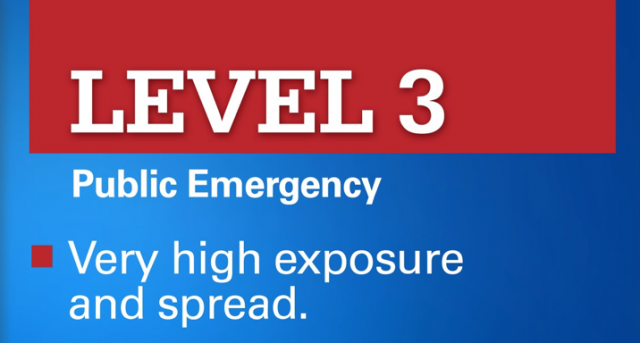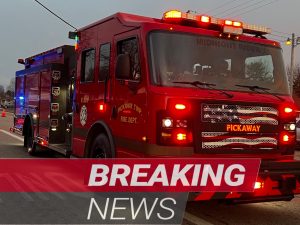OHIO – Dewine released a new Ohio Public Health Advisory Alert System to help make clear the dangers happening in counties in #Ohio. The color-coded system is built on data to assess #COVID19 spread and inform and empower individuals, businesses, & local gov’t in their response.
Seven Indicators are based on different triggers of Hospital Admissions, ICU bed Occupancy, Increase in Outpatient Visits, Increase in Emergency Room visits, Proportion of cases not congregate cases, Increase in New Cases, and New Cases per capita.
Below are the seven data indicators:
- New cases per capita: When data shows a county has had an average of 50 cases per 10,000 people over a two week period that will trigger a flag for an increased case rate. Using this data, means health officials are taking into account the population of a county when monitoring case increases.
- A sustained increase in new cases: If the number of new cases in a county continually increases, that’s another indicator of virus spread. A county will be flagged for meeting this indicator if data shows at least a five-day period of sustained growth in cases.
- Proportion of cases not congregate cases: Data showing more than 50 percent of new cases originating from non-congregate settings during at least one of the pas three weeks will trigger a flag.
- Sustained increase in ER visits: ER data will show health officials trends in the number of people who visit an emergency department with COVID-19 symptoms or a COVID-19 diagnosis as a result of the visit. A County is flagged when there is an increase in such ER visits over a five-day period.
- Sustained increase in outpatient visits: This data set looks at the number of people visiting outpatient settings, including telehealth appointments, with suspected or confirmed COVID-19 symptoms. A county is flagged when there is an increase over a five-day period.
- Sustained increase in new COVID-19 hospital admissions: When the numbers show at least a five-day period of sustained growth in the number of county residents with COVID-19 are admitted to a hospital the county will be flagged for meeting this indicator.
- ICU bed occupancy: This indicator looks at data for COVID-19 and non-COVID-19 use of ICU beds. A county will be flagged for this indicator when the regional ICU occupancy goes about 80 percent for at least three of the last seven days.
The state is also working to refine additional measurements including contact tracing, tests per capita and percent positivity.
Based on these date indicators, the color-coded system will provide counties with guidance on the severity of the problem:
Based on the level of your county will have different watch levels, at level 4 orders will be similar to original stay at home orders.
ALERT LEVEL 1 (YELLOW): A county has triggered zero or one of the seven indicators, and there is active exposure and spread. Today, we have 53 Ohio counties at Alert Level 1. The majority of these counties are seeing a moderate number of cases, according to the CDC’s definition.
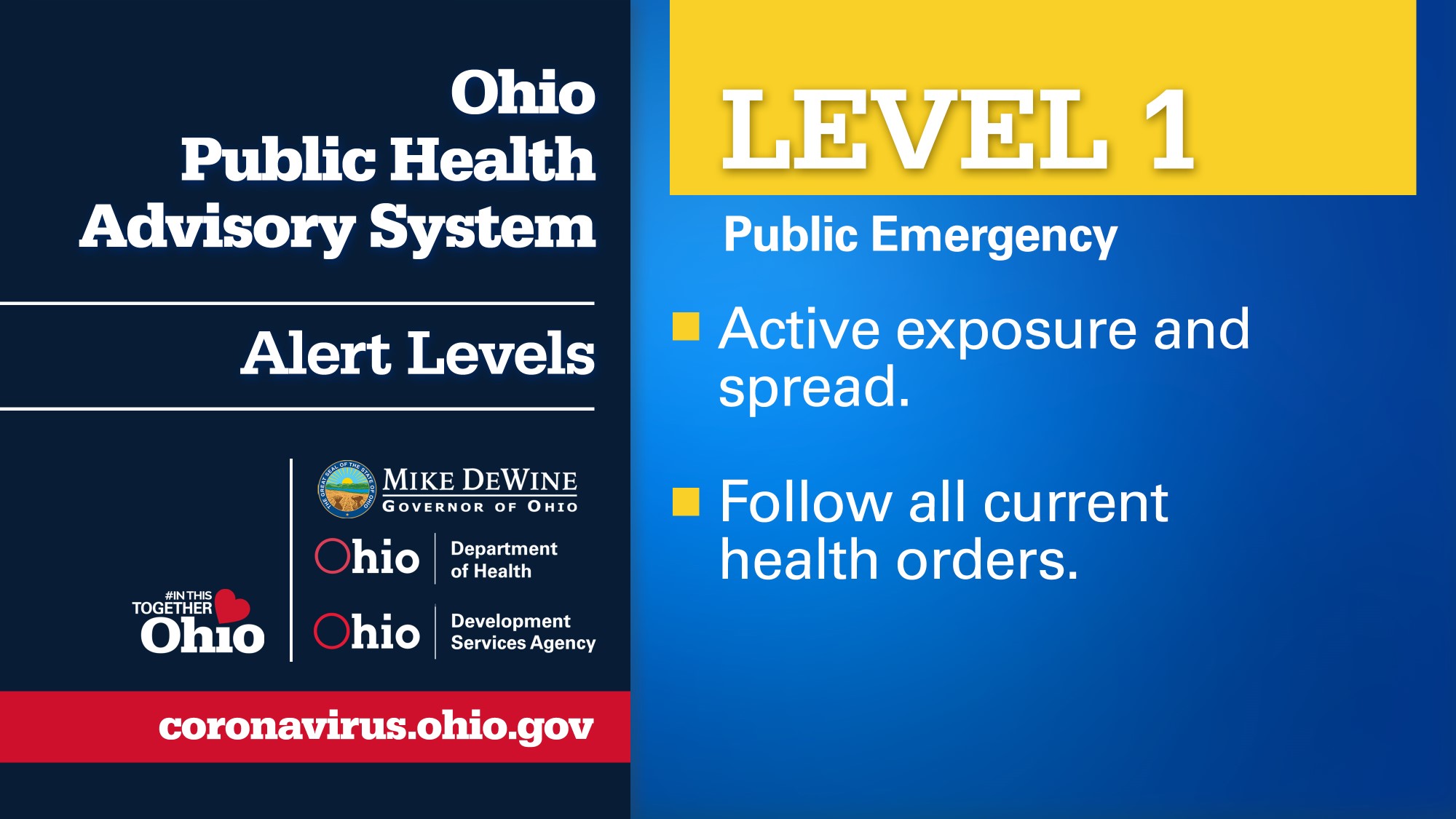
ALERT LEVEL 2 (ORANGE): A county has triggered two or three of the seven indicators, and there is increased risk of exposure and spread. We have 28 #Ohio counties in this category. These counties are seeing cases that are growing in the community in the last two weeks.
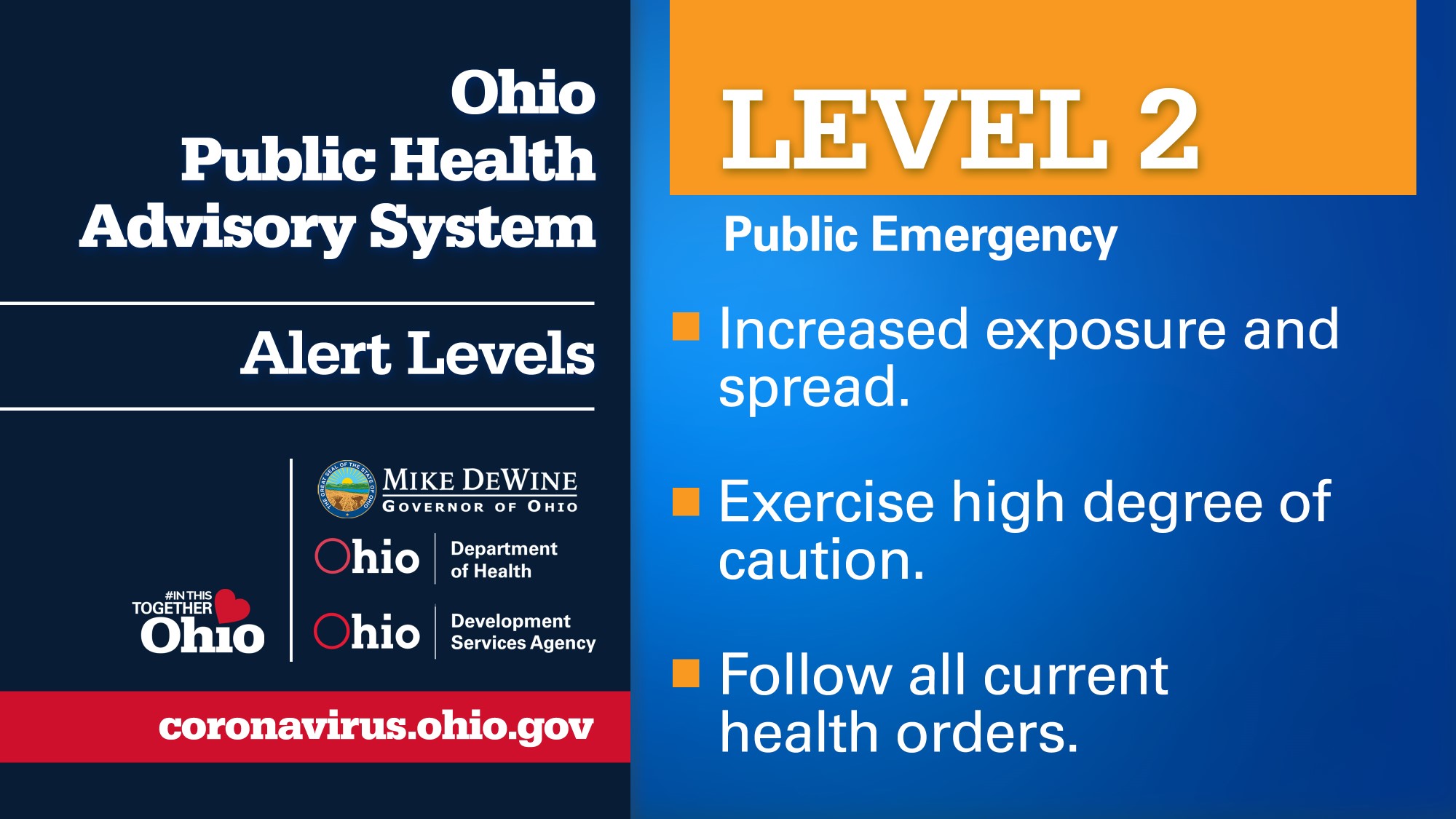
ALERT LEVEL 3 (RED): A county has triggered four or five of the seven indicators, and there is very high exposure and spread. There are currently 7 Ohio counites at Level 3. Risk is very high. Ohioans should limit activities as much as possible. Wear a mask when you go out.
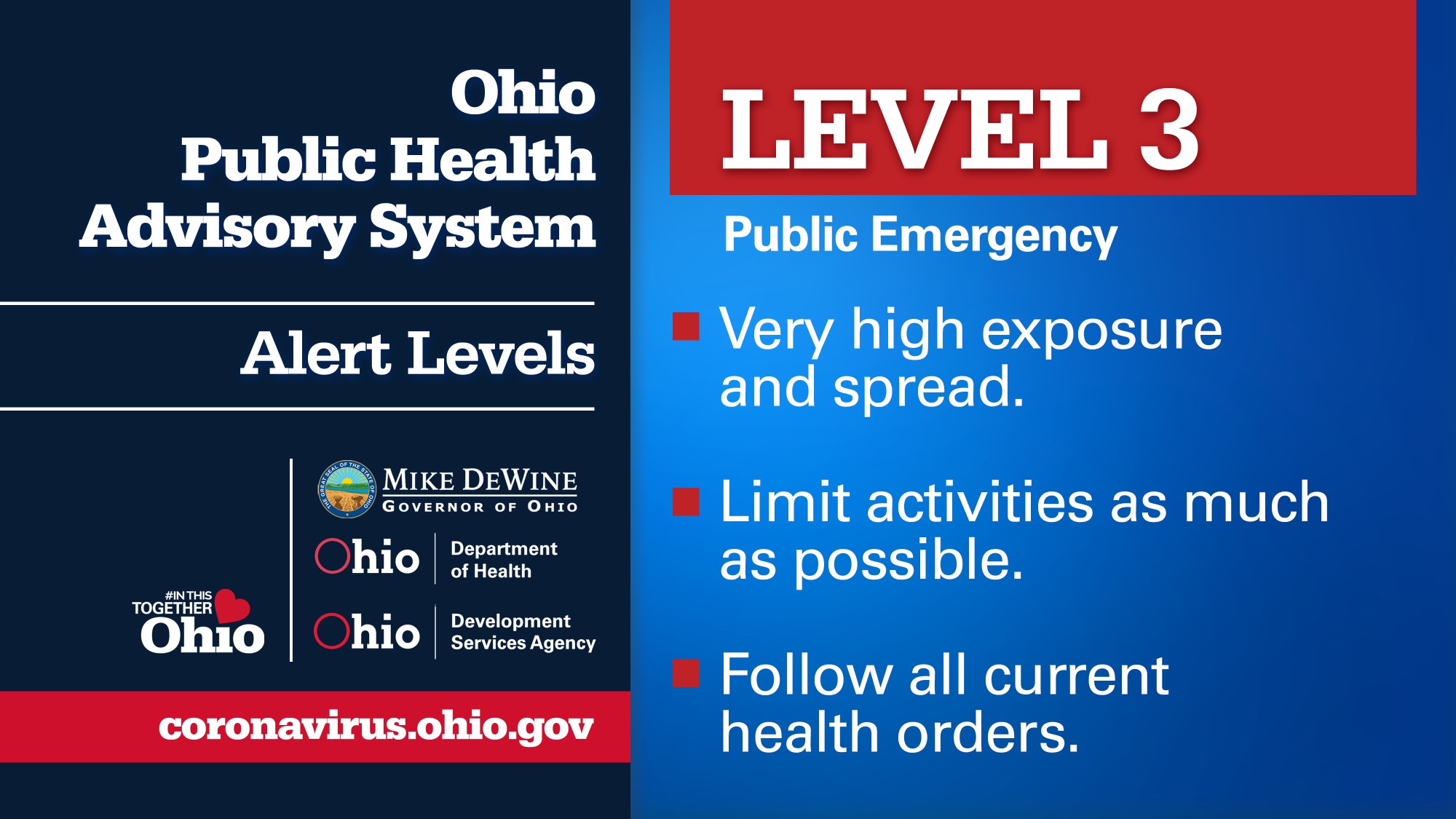
ALERT LEVEL 4 (PURPLE): A county has triggered six to seven of the indicators, and there is severe exposure and spread. Stay home as much as possible. No counties are in purple right now.
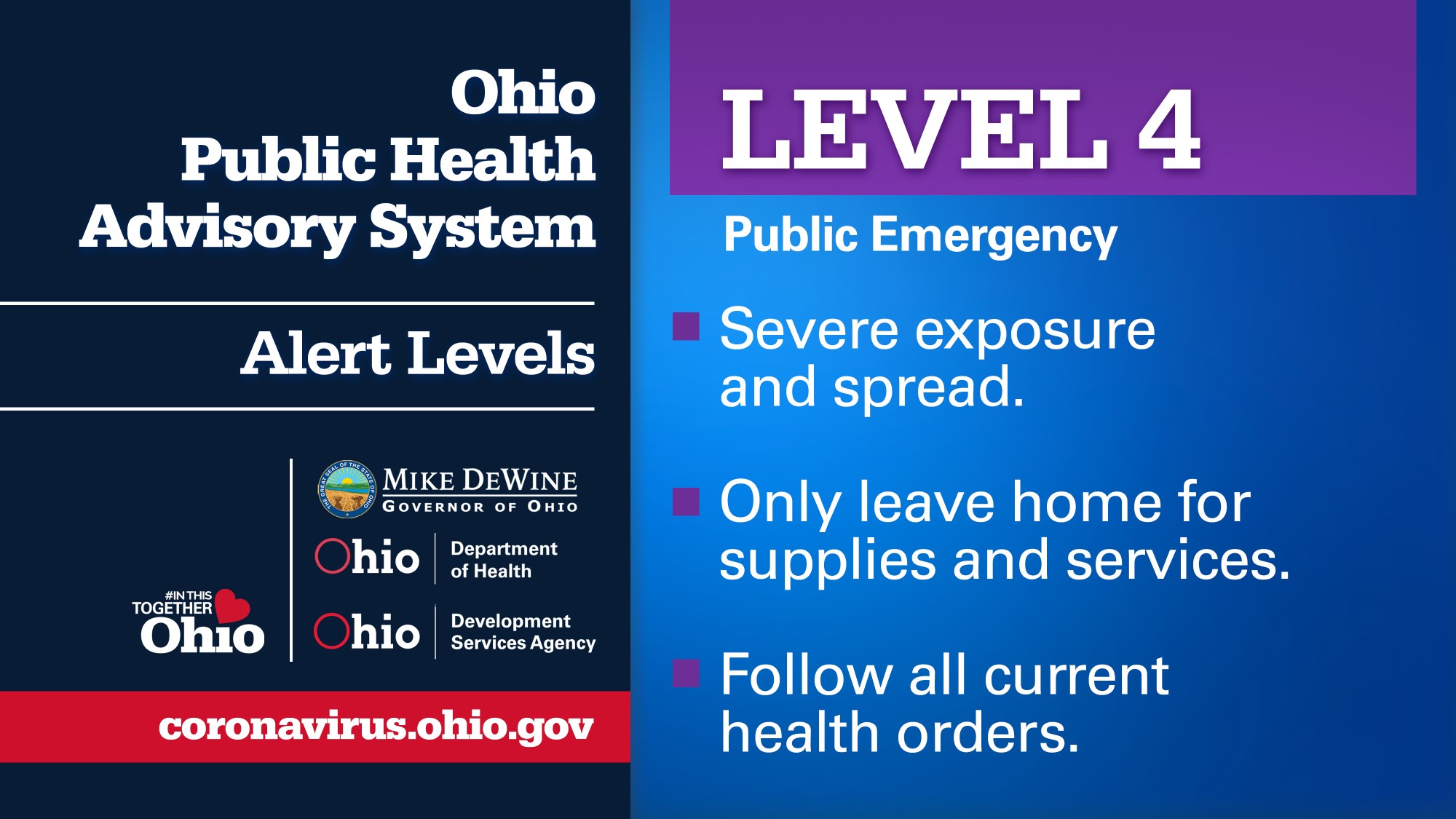 PICKAWAY – Pickaway County Cases have spiked to higher numbers than ever reported in the county, social interactions and more testing could be to blame.
PICKAWAY – Pickaway County Cases have spiked to higher numbers than ever reported in the county, social interactions and more testing could be to blame.
On June 22 Pickaway County reported only 7 cases in the county this number was average over the entire month of June, but two weeks later on July 6, 2020 Pickaway county sits at 58 active cases and 6 people hospitalized. This is the highest number of active cases outside of the Pickaway Correction facilities that Pickaway has seen. According to Pickaway Health this is for two reasons, more interactions with people and more testing.
According to Susan Foster Director of Clinical Services Pickaway County Public Health, “We have seen a rise in cases. This is not only due to the expanded testing but due to the reopening of businesses, recreation, restaurants, bars, etc. I do not have exact numbers on the age ranges, but we are seeing an uptick in cases of children (18 and under).
What we can tell the residents of the county is that it is highly recommended to wear a mask in public, to maintain social distancing, to wash or sanitize their hands, to use sneeze and cough etiquette, and to stay home when you are ill.”
On July 2, 2020 Pickaway County Health offered a free testing facility for anyone that wanted to get tested for COVID-19. The testing during that time was heavy.



